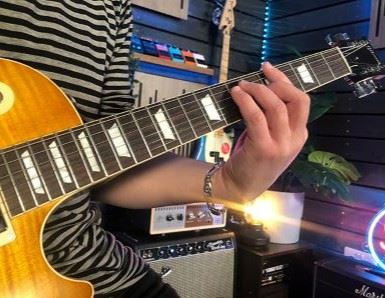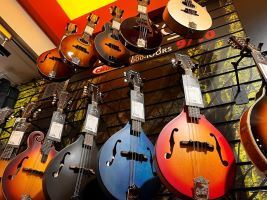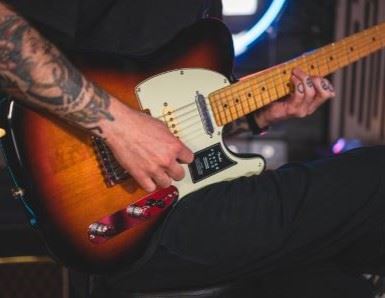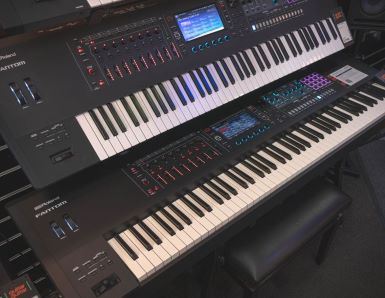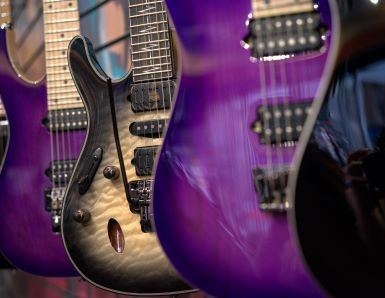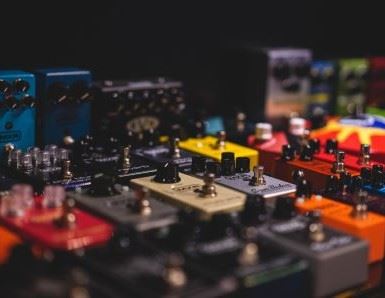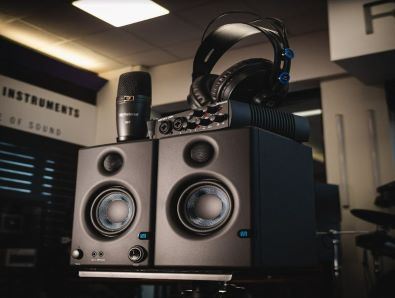Compression 101: Here’s Why You NEED A Compressor Pedal
Disclaimer: The information in this article is provided by the guest blogger and does not necessarily reflect the views and opinions of guitarguitar.
When it comes to talk of guitar effects, compression is usually one of the first to crop up.
And trust us - that’s no coincidence. As far as guitar effects go, compression is a staple, and arguably one of the first effects that any rookie should attempt to wrap their head around. As for why, that all comes back to what compression allows you to do.
While at first glance compression may appear to be a pretty minor effect (distortion & reverb are a lot more ‘in your face’) if implemented with intention, compression can be very effective. So much so that it could even become a defining characteristic of your sound!
So now that you’re aware that these lowkey guitar pedals are to be taken seriously, here’s a rundown on everything you need to know about compression & its effects on your sound…
What Does a Compressor Pedal Do?
Much as the name suggests, compression is all about compressing your guitar signal. Hear someone talk about making a sound “tighter” or "more sharp” and chances are they’ll be the bright spark holding the compression pedal.
The way compression works is by reducing the overall dynamic range of your guitar signal, i.e. the height of the peaks and the depth of the troughs. All of which prevents there being any notes jumping uncomfortably out of the mix. As a general rule, the more compression you apply to your sound, the fatter, beefier and more prominent it should become.
NOTE: We say ‘should’ because less is usually more with a compression. Dial a compressor pedal all the way up & there’s a good chance you’ll flatten your guitar signal. Something that’ll leave you with a sound that’s more flat than tight. An important distinction to make!
Compressors also come with a ratio, to give you an indication of how aggressive the compression is going to be. In the majority of cases we’d recommend starting at 4:1 and working your way up. Although what ratio works best for you will of course depend on factors like: your instrument, style of play and the vibe you’re going for.
In case you’re wondering, the first part of that ratio represents gain. Specifically the amount of gain that’s applied to the signal when it hits a certain level. While the second number represents how much the compression will increase when this happens. So for instance, the 4:1 ratio above means that for every 4dB the signal rises above this level, the output of the compressor will increase by 1dB.
But that’s not all! Most compressors also come with adjustability for the Attack too. This is how aggressive the transient (i.e. initial part of the guitar signal) is going to be. Round them off with a compressor and you can somewhat take the edge off the sound and help make it less aggressive. Useful if you’re the heavy-handed type, who’s been tasked with recording a soft and dreamy love song!
Really then, there’s a whole lot more to compression than meets the eye. Compressor pedals certainly tick all the boxes.
Are There Other Types of Compressor Outside of Compressor Pedals?
Good question!
See, while pedals are pretty common, compressors themselves do come in various other forms. Pedals are just how they’re designed for guitarists, keyboardists & any other musician who doesn’t have a hand to spare. However, should you hang around enough producers, you’ll likely come across a few other types.
One of the most notorious being the hardware compressor. Think of this as the OG - the way that compression was first applied, before it could be squeezed into a pedal the size of a shoe. For a lot of ‘old skool’ producers, using hardware remains their preferred way of adding compression. However, as you’d imagine, with tech nowadays, hardware like this is becoming less common, as more music makers take the leap over to software.
And to be honest, it’s not hard to see why. Compared to existing hardware, compression plugins are: far cheaper, easier to get your hands on and yet give you access to a lot of the same features. In fact, the majority are actual recreations of existing hardware that can be installed & controlled all via your DAW (Digital Audio Workstation). Seriously impressive stuff!
So while pedals are popular with guitarists - especially live giggers - they aren’t the ‘be all & end all’ when it comes to compression. You have a LOT of options.
FYI: If you want to get a better feel for what compression sounds like, check out ‘Handsome’ by the Vaccines - a track where virtually every instrument is compressed to some extent.
Where Does a Compression Pedal Go in the Chain?
DISCLAIMER: There’s no real right/wrong answer to this, as everyone’s signal chain differs.
But, the general consensus is that compression should be near the front - preferably the first pedal, maybe with the occasional exception from effects like vintage fuzz & wah. As for why, that all comes back to what compression does.
Compression is a gatekeeper. One that’s responsible for taming any unruly peaks & adding gain. So by putting it first, you’re automatically ensuring that any effects you apply later down in the chain (Distortion, Boost, Overdrive etc.) are being applied directly within these constraints. Fail to do so & you could find that you lose some more funky elements of your play. Check out this guest writer's article It’s All About the Boost Pedal for more details on boost pedals.
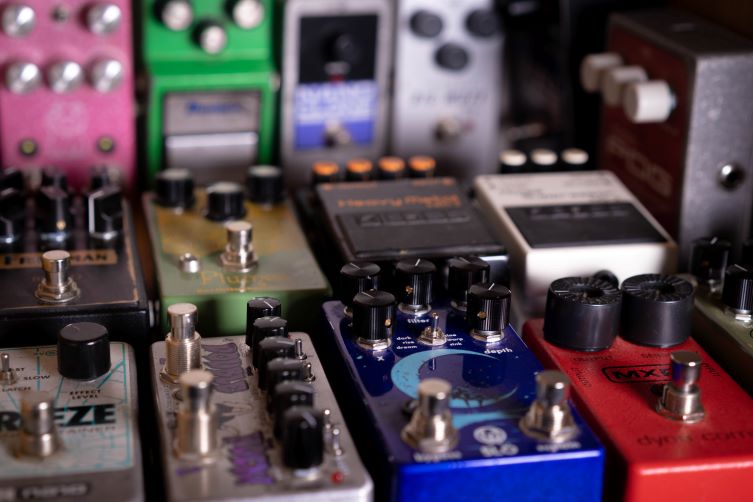
How to Choose a Compression Pedal? A Buyer’s Checklist…
It’s one thing to decide to buy a compression pedal, but it’s another thing entirely to hunt down the best compression pedal for you. In other words, that pedal which ticks all the boxes & integrates seamlessly with your setup.
When it comes to hunting down your dream compression pedal, here’s a few things to bear in mind…
- Build quality - Not all compression pedals are made equal. Some are plain, others are painted, some brands encase their compressor pedals in metal whilst others use plastic. Each of these styles can provide great quality, plenty of flexibility and be hardwearing
- Functionality/Usability - Yet another aspect of pedal-purchase to take into account is what it enables you to do and how it enables you to do it. We say so because occasionally, spending that bit extra may get you more adjustability, or simply make the pedal easier to live with. Any pedals with LEDs instantly get a vote from us. Such quirks not only make a pedal 10x easier to use, but they’re also a breeze to see during a live performance
- Famous faces - In the case you’re looking to emulate the style of a well known guitarist, getting your hands on the same compression pedal may be a step in the right direction. After all, compression has a considerable impact on their overall sound. So should you be a fan of David Gilmour, the MXR Dyna Comp might be worth a look
Author: Alex Harrison
Bio: The guys over @ Music Lowdown live & breathe music. They’re music nerds of another kind, who’re on a mission to share their years’ of industry experience with the world.

